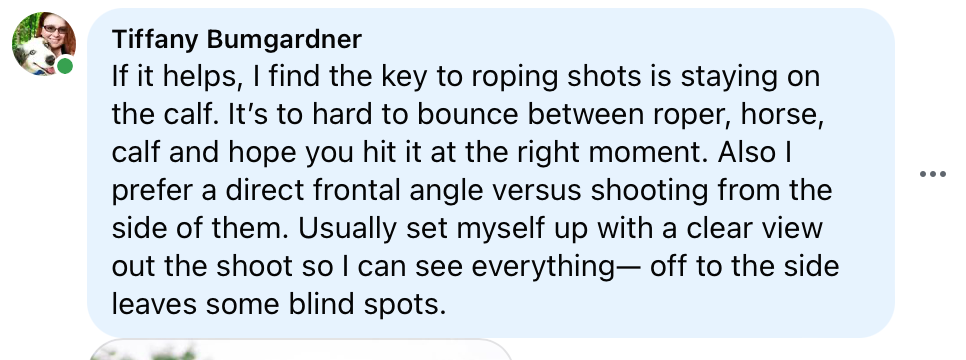As photographers it is hard not to get upset when our work isn’t where we want it to be. Or if we have an off day. Or if we are set up in a location that provides a tough angle. Or if we have to photograph something we do not necessarily enjoy.
And that is what a rodeo photographer friend of mine posted about the other day. He was discouraged because he believes his skills in shooting roping are not good enough and the images didn’t yield results he had hoped for.
We have all been there.
And as a professional with a decade of rodeo experience, who has laid in the dirt, perched on the rail, been rained on, and knocked in the dust and off the rail I have learned the sport of rodeo and how to photograph the complexity that it is.
Roping is hard to capture. You have a lot of moving parts from multiple animals, ropes, people, and then add speed, the fact the animals have their own mind and can do anything in seconds that you didn’t plan for and it’s very, very hard to pull off great shots.
I hate when great photographers doubt their skills because of the challenges in the arena and so I offered both logistical advice and the same words I wrote above about how complex photographing roping can be.
My friend did say that he rarely has an issue outdoors, but I have shot in all areas indoor and outdoor. For me a lot of trust is in my camera, in knowing I have the gear capable and in knowing if its darker I can still brighten it up and lift shadows because I shoot in RAW which allows me greater editing capabilities.
Roping is hard, whether indoors or outdoors. Most the rodeos I have photographed are outdoors. Most have been poor lighting with the exception of the last few years where a decrease in ropers had them running in the daylight.
Either way it is a lot of moving parts and whether indoors or out for me it is what you are focusing on and watching. The steer and calf are my targets, I can not focus on the rider and horse because then I stand to miss the cow altogether. The calf/steer dictates the pace, direction, and action.
While I hope my advice helps my friend a lot of it comes down to preferred style, location, and interest in the event. I would get bored of too much of the same thing so I had to vary how I photographed runs so that I would have usable images.
Photographers are human, we miss things, we bump our settings, we have off days, or we simply can’t please the artist in our heads. But we shouldn’t be discouraged or hard on ourselves, sometimes what we do takes a lot of patience, skill, and years of practice.






















